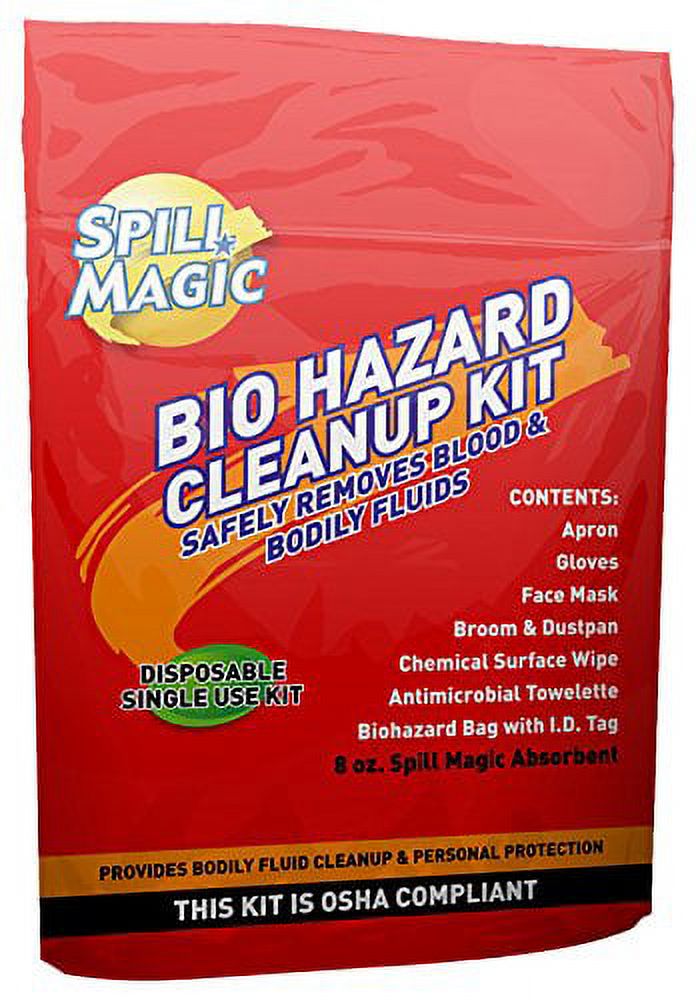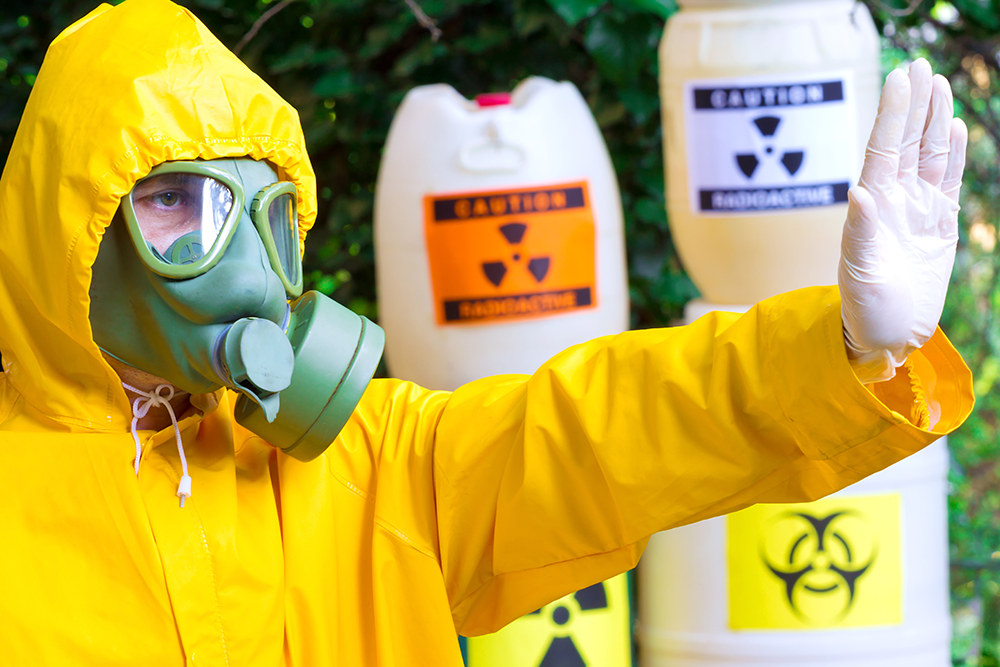Flood Damage Restoration: Quick and Efficient Healing for Your Home
Flood Damage Restoration: Quick and Efficient Healing for Your Home
Blog Article
Expert Biohazard Cleaning and Decontamination for Blood, Bodily Fluids, and Hazardous Materials
In the world of biohazard cleaning and decontamination for blood, bodily liquids, and unsafe products, accuracy and proficiency are paramount. The potential health threats related to exposure to biohazards underscore the critical demand for careful handling and complete clean-up. Specialized training gears up professionals with the expertise and abilities required to deal with these hazardous scenarios successfully. Nevertheless, it is not merely about tidying up; the value of utilizing appropriate decontamination strategies can not be overemphasized. As we navigate the elaborate landscape of biohazard cleanup, recognizing the subtleties of policies, conformity, and the customized equipment at play becomes important in ensuring a risk-free and detailed decontamination process.
Health And Wellness Threats of Biohazard Exposure
Exposure to biohazards postures significant health and wellness threats that can result in serious consequences for individuals and areas alike. Biohazards encompass a vast range of organic substances, including blood, physical fluids, mold and mildew, microorganisms, viruses, and various other potentially transmittable materials. When people enter into call with these biohazards, whether with crashes, incorrect handling, or ecological exposure, they deal with the threat of contracting severe diseases or diseases.
One of the key health and wellness threats connected with biohazard exposure is the transmission of contagious conditions. Bloodborne pathogens such as HIV, hepatitis B and C, and numerous germs can be present in biohazardous products, posturing a straight risk to human health and wellness. Inhaling air-borne biohazards like mold spores or coming into contact with infected surfaces can likewise cause breathing concerns, allergic reactions, and other unfavorable health and wellness effects.
Additionally, biohazard exposure can have lasting health and wellness ramifications, with some diseases manifesting years after the first call (Blood Cleanup). Consequently, it is critical to focus on proper biohazard cleansing and purification to alleviate these health risks and make certain the safety and security of individuals and neighborhoods

Specialized Educating for Biohazard Cleaning
When it pertains to handling biohazard clean-up successfully and safely, specialized training plays a basic role in making sure proper decontamination treatments are followed. Biohazard cleanup calls for specific understanding and abilities to effectively reduce dangers related to bloodborne microorganisms, physical liquids, and hazardous materials. Specialists trained in biohazard cleanup go through strenuous guideline on how to safely manage, get rid of, and get rid of biohazardous products to stop contamination and exposure.
Specialized training for biohazard cleanup covers a variety of necessary subjects, consisting of proper personal safety tools (PPE) use, bloodborne microorganism recognition, purification techniques, and hazardous waste disposal methods. Individuals educated in biohazard cleaning are geared up with the essential know-how to assess contamination levels, determine prospective threats, and implement suitable cleaning procedures in compliance with regulatory requirements.
Continual training and education and learning are extremely important in the area of biohazard cleanup to stay updated on the latest purification modern technologies, safety and security methods, and guidelines. By purchasing specialized training, biohazard clean-up professionals can effectively respond to servpro flood cleanup emergency situation clean-up circumstances and redirected here protect both public health and the setting.
Relevance of Appropriate Decontamination Techniques
Utilizing correct purification methods is vital in biohazard clean-up to efficiently decrease and remove unsafe products wellness threats. Reliable decontamination not only guarantees the removal of visible traces of blood, bodily fluids, and various other biohazards however also targets invisible virus that might pose significant health and wellness risks if not appropriately removed. By following stringent purification protocols, educated experts can substantially decrease the threat of exposure to dangerous microbes, viruses, and bacteria that might lead to infections or diseases.
Appropriate decontamination methods involve making use of customized devices and anti-bacterials that are specifically created to neutralize biohazards efficiently. Extensive cleansing and sanitation of polluted locations are essential to avoid the spread of virus and guarantee a risk-free setting for residents. Furthermore, the proper disposal of biohazardous waste following purification treatments is essential in preventing contamination of various other surface areas or individuals.

Devices and Tools for Safe Cleanup
When dealing with blood, physical fluids, or hazardous products, biohazard cleaning experts rely on specialized equipment to reduce direct exposure dangers and thoroughly sanitize the affected location. Additionally, biohazard cleansing packages having disinfectants, absorbing products, and biohazard bags are made use of to safely have and dispose of contaminated products.
Advanced cleaning devices like hospital-grade disinfectants, HEPA-filtered vacuum cleaners, and fogging equipments are utilized to disinfect surfaces and get rid of biohazards efficiently. Specialized devices such as sharps containers and biohazard waste published here disposal containers are made use of to safely handle sharp items and biohazardous waste products. By utilizing the best tools and devices, biohazard cleaning professionals can make sure an extensive cleaning procedure that prioritizes safety and reduces wellness threats for both employees and residents of the afflicted area.
Rules and Conformity in Biohazard Cleansing
Proper adherence to policies and compliance requirements is extremely important in biohazard cleansing to ensure the security of both workers and the atmosphere. Federal government companies such as OSHA (Occupational Safety And Security and Wellness Management) and the EPA (Environmental Protection Agency) have established particular guidelines for biohazard clean-up treatments to decrease health risks and environmental contamination. These policies cover a series of elements including the handling, transport, and disposal of biohazardous products, along with the necessary training and protective equipment needed for employees associated with the cleaning procedure.
Biohazard cleansing firms must remain current with these policies to ensure that their procedures meet the needed safety standards. Failure to comply with these regulations can lead to serious repercussions, consisting of fines, legal action, and endangering the health of individuals and the setting. By complying with strict regulations and conformity steps, biohazard cleaning business can efficiently minimize dangers and make sure a detailed and risk-free cleaning process for all events included.
Final Thought
To conclude, biohazard cleansing and decontamination require customized training, appropriate techniques, and adherence to guidelines. Exposure to blood, physical liquids, and dangerous products positions substantial health and wellness threats, making it important to use the ideal equipment and tools for secure clean-up. By adhering to stringent methods and guidelines, experts can effectively alleviate the dangers connected with biohazard direct exposure and guarantee the safety and security of both themselves and others.
As we navigate the detailed landscape of biohazard cleanup, comprehending the subtleties of regulations, compliance, and the customized equipment at play comes to be necessary in guaranteeing a secure and thorough decontamination procedure. (Blood Cleanup)
When it comes to handling biohazard clean-up efficiently and safely, specialized training plays a basic role in guaranteeing appropriate decontamination procedures are complied with.Using correct decontamination methods is critical in biohazard cleanup to successfully minimize and get rid of hazardous materials health and wellness threats. In addition, biohazard cleaning sets having disinfectants, absorptive products, and biohazard bags are made use of to safely get rid of and have of infected products.
Federal government agencies such as OSHA (Occupational Security and Wellness Management) and the EPA (Environmental Defense Agency) have developed details standards for biohazard cleaning procedures to minimize health and wellness dangers and ecological contamination.
Report this page